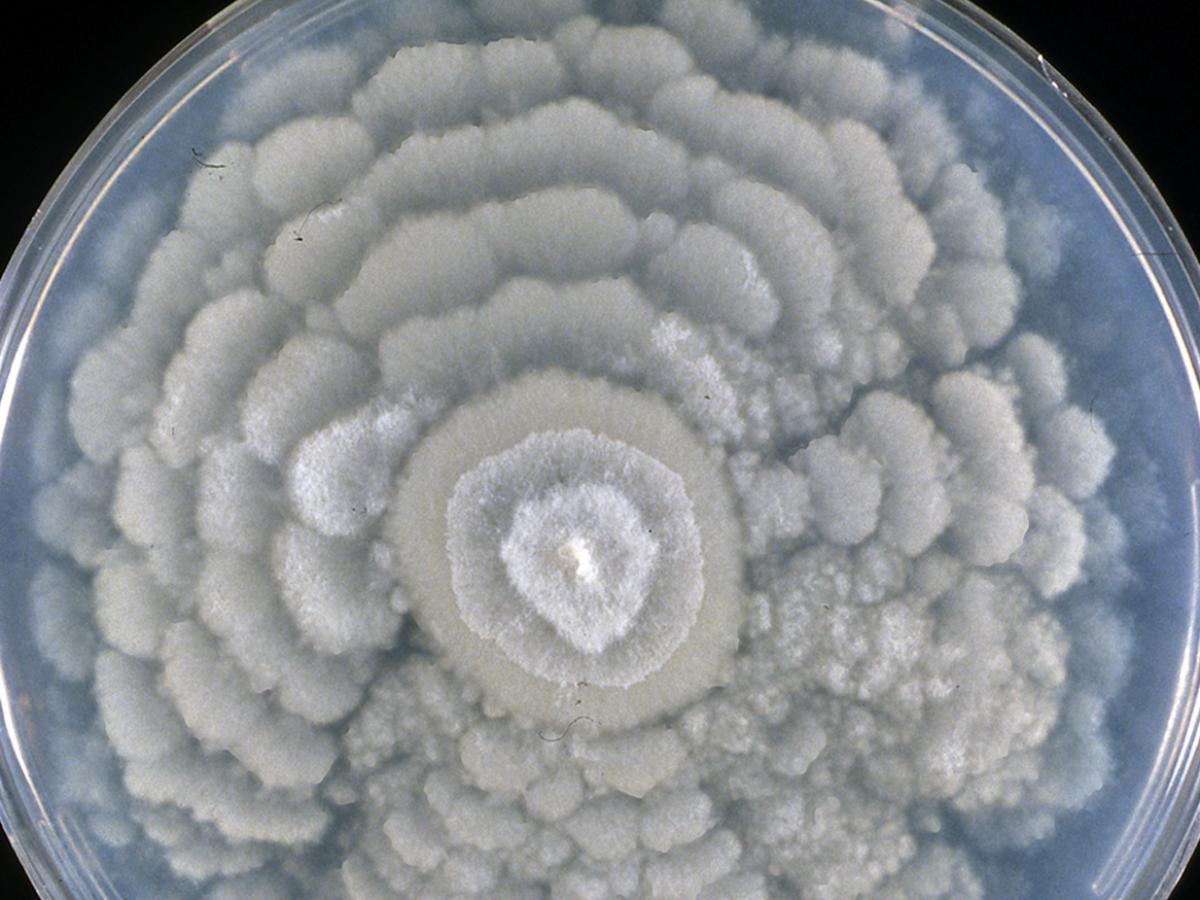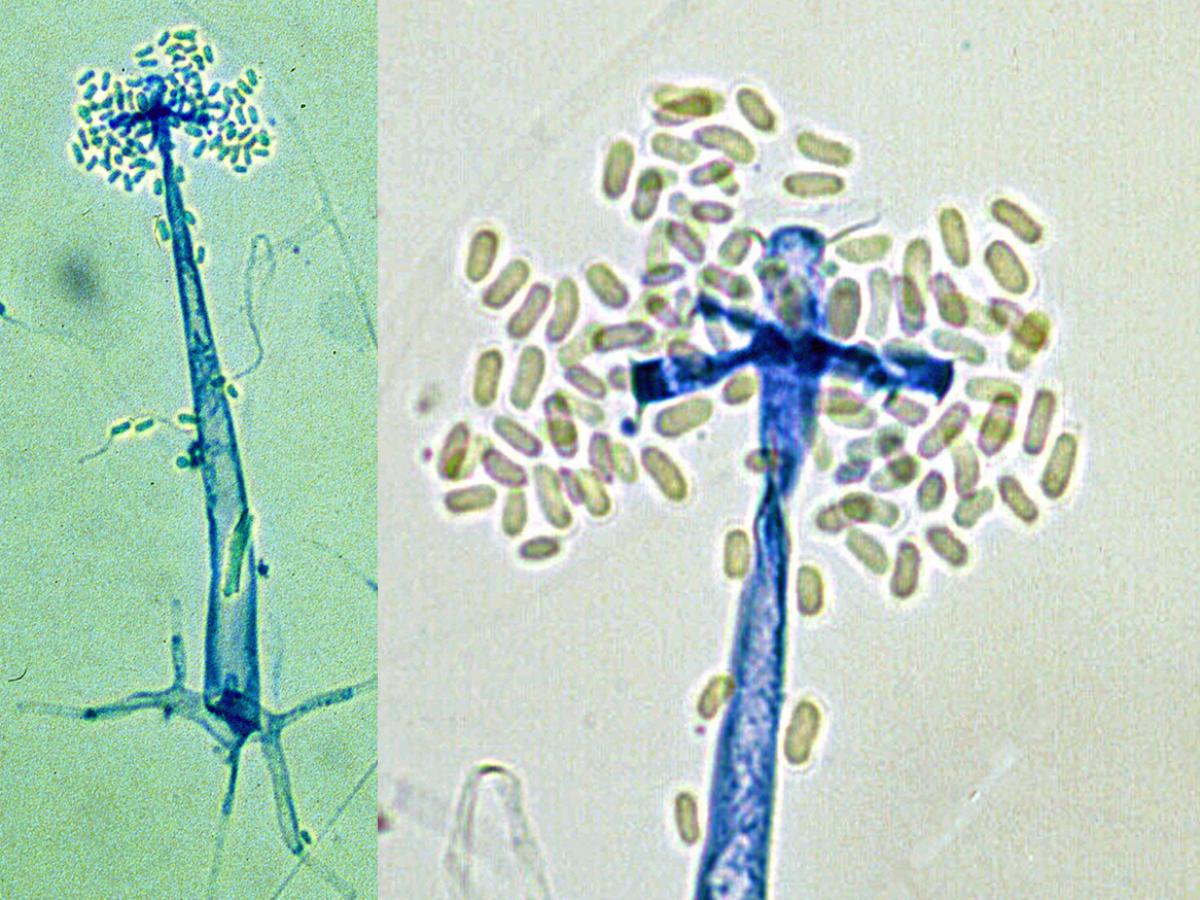Mortierella wolfii
The genus Mortierella has now been placed in a separate order, the Mortierellales (Cavalier-Smith 1998).
The genus contains about 90 recognised species, however Mortierella wolfii is probably the only pathogenic species being an important causal agent of bovine mycotic abortion, pneumonia and systemic mycosis in New Zealand, Australia, Europe and USA.
RG-2 organism.

Culture of Mortierella wolfii.
Morphological description:
Cultures are fast growing, white to greyish-white, downy, often with a broadly zonate or lobed (rosette-like) surface appearance and no reverse pigment. Sporangiophores are typically erect, delicate, 80-250 µm in height, 6-20 µm wide at the base, arising from rhizoids or bulbous swellings on the substrate hyphae and terminating with a compact cluster of short acrotonous (terminal) branches. Sporangia are usually 15-48 µm in diameter, with transparent walls and a conspicuous collarette is usually present following dehiscence of the sporangiospores. Columellae are generally lacking and sporangiospores are single-celled, short-cylindrical, 6-10 x 3-5 µm, with a double membrane. Chlamydospores with or without blunt appendages (amoeba-like) may be present, zygospores have not been observed. Temperature: grows well at 40-42C; maximum 48C.

Sporangium with acrotonous (terminal) branches and rhizoids of Mortierella wolfii.
Key features:
Mucorales, rapid growth at 40C (thermotolerant), and characteristic delicate acrotonous branching sporangia without columellae.
References:
Domsch et al. (1980), McGinnis (1980), Rippon (1988), de Hoog et al. (2000, 2015).
